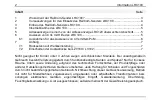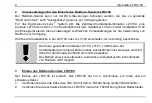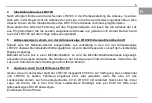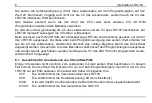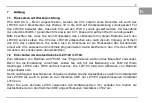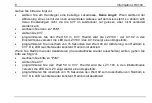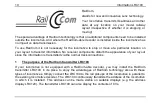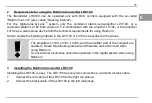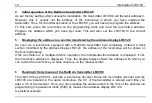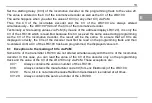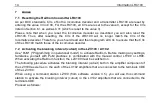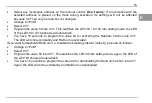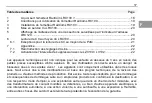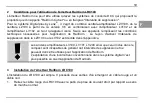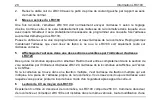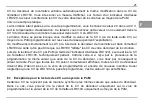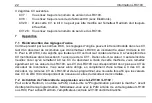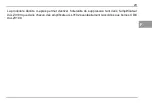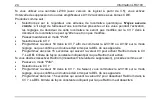
13
E
Set the starting delay (CV3) of the locomotive decoder on the programming track to the value 20.
The value is entered in the CV of the locomotive decoder as well as the CV of the LRC100.
The same happens when you alter the value of CV3 (or any other CV) via PoM.
Thus, the CV of the locomotive decoder and the CV of the LRC100 are always altered
simultaneously – the LRC100 "mirrors" the CVs of the locomotive decoder.
Technically, while reading values via PoM (by means of the address display LRC120), it is only the
CV of the LRC100 which is read. But because this CV received the same value during programming
as the CV of the locomotive decoder, the result will be the same. To ensure that all CVs are
displayed correctly, the CVs of the decoder must first be read on the programming track and then
re-entered. Until a CV of the LRC100 has been programmed, the displayed value is 0.
6.1 Exceptions to the reading of CVs via PoM
Some CVs of the transmitter LRC100 are not altered simultaneously with the CVs of the locomotive
decoder. In this case, you can read the value of the CV of the decoder only on the programming
track and the value of the CV of the LRC100 only via PoM. These exceptions are:
CV7:
Always contains the version number of the LRC100 .
CV8:
Always contains the manufacturer code 99 (for Lenz Elektronik) of the LRC100.
CV29:
Here, bit 4 is not altered because RailCom transmission is enabled at all times.
CV128: Always contains the service number of the LRC100.
Summary of Contents for 15105
Page 16: ...16 Information LRC100 ...


